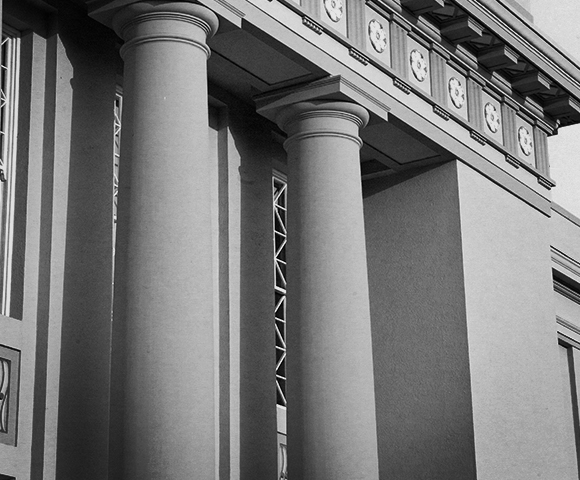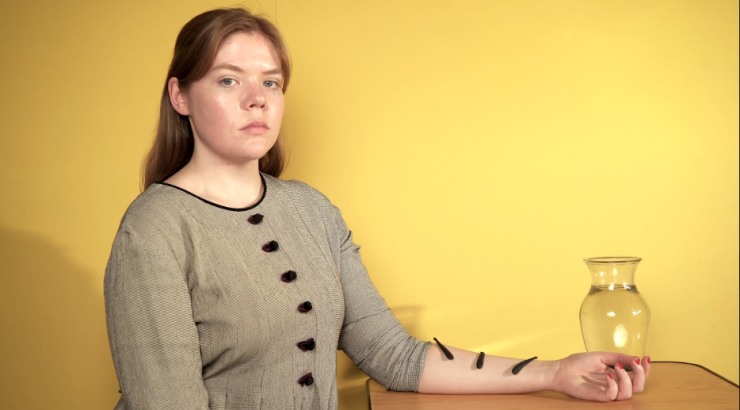
The History of Hysteria: Alison Pirie (’18) rewrites the history of female sexuality Check out Pirie's performance art at the Guggenheim Gallery on campus, opening April 23rd!
April 25, 2018
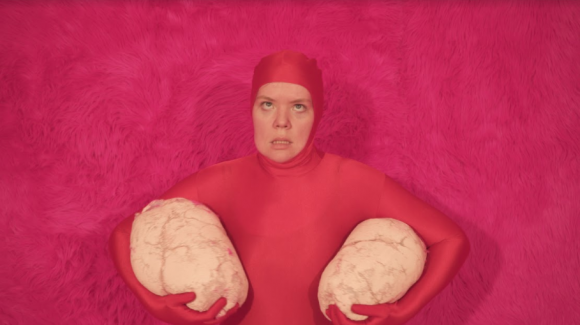
Alison Pirie portraying “the womb” in her project “The Pelvic Theatre Presents the History of Hysteria”
The zeitgeist is shifting for women in 2018, and senior Studio Art major Alison Pirie (’18) is one of the changemakers. “A year or so ago a guy said to me, ‘All you women are crazy’…and it made me think, why is it that women are always the crazy ones?” says Pirie. This exigent question was Pirie’s launchpad that sent her delving headfirst into the history of hysteria, what she describes as “a disease that originated in Ancient Greece in the fourth century” that has had extensive residual effects on the contemporary patriarchal culture, one that systematically oppresses women by pathologizing their sexuality.
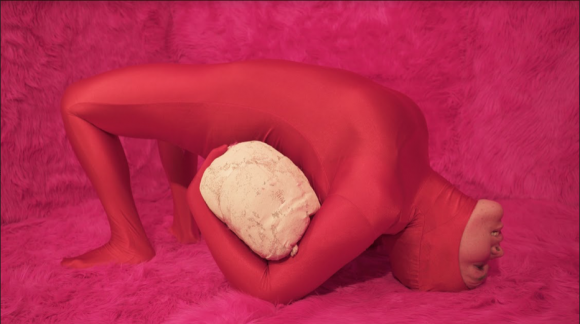
Still shot featuring Alison Pirie from “The Pelvic Theatre Presents the History of Hysteria”
Pirie’s senior thesis is entitled, “The Pelvic Theatre Presents the History of Hysteria,” an artistic project that culminates in a series of filmed theatrical scenes, in which Pirie plays key characters in the narrative of hysteria. But the roles she takes on in these scenes are far from typical, and deliberately provocative to bring light to the wild falsehood of the roots of hysteria as a female-bound disease. Playing unorthodox roles such as the uterus and the clitoris, as well as taking on the opposing personas of the female patient and the male doctor, Pirie’s work is “empowering the female voice in this narrative and challenging the power dynamic between the historically active male physician and passive, female spectacle.”In addition to portraying the key narrative players, Pirie proves her creativity to be expansive. Her curation of “sets, costumes, props, and compositions reference primary writings, drawings, and photographs” each act as rhetorical elements contributing to the theme and message of the project.
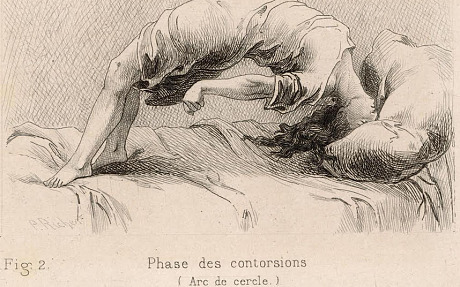
Insanity Hysteria 1881
When asked to explain the history of hysteria, Pirie did not mince her words. Its origins in Ancient Greece targeted the concept of the female “wandering womb.” This original hysteria treated women as if they were inflicted by a physiological disease in which “a woman’s womb was believed to wander through the body, hungry for semen, wreaking havoc on her other organs, and causing her physical ailments such as suffocation, fainting, hallucinations.” Though thought to be treatable using fire to “warm the frigid body” or honey “to draw the uterus back down,” the only permanent cure was to have intercourse and bear children. A physical disease curable only by a strict prescription of traditional gender roles undoubtedly drips with calculated oppression, and unfortunately, it had immense cultural implications. During the 19th century, hysteria morphed into a disease of the psyche, influenced by the revolution of Freud’s psychoanalysis. Pirie says emphatically, “Hysteria was a recorded disease for over 4,000 years, up until 1952, and continues to shape the pathologization of female bodies and sexuality today.”
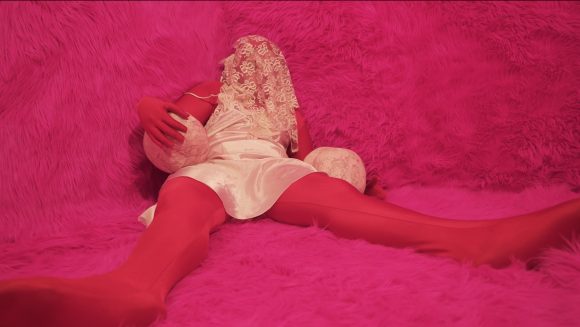
Still shot depicting “The Wedding”, featuring Alison Pirie
The goal of the project is no small task. Concisely, Pirie aims to rewrite history. “The history of hysteria has largely been documented by men, therefore by recreating this history from a female perspective I have the power to rewrite the script and tell the story in a different light; exposing its absurdities, biases and inaccuracies,” she explains. Her final project will be installed on campus in the Guggenheim Gallery, opening on April 23rd.
The Center for Undergraduate Excellence is thrilled that Alison Pirie represents Chapman University as one of the esteemed Grant Recipients for Fall 2017. Her grant has been used to fund set building materials, costumes, props, camera and lighting equipment, as well as installation materials for the upcoming exhibit. Of the grant writing process, Pirie notes, “This was my first time writing a grant proposal, but it was a good experience because it made me think more logistically about how I was going to execute my project and how to communicate my what my project is.”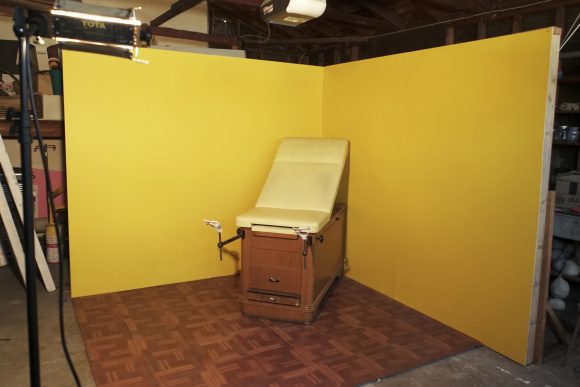
What’s next for Alison Pirie? Upon graduation in the spring, Pirie is making a big move, relocating to New York City for a presitgious internship with Sackler Center for Feminist Art at The Brooklyn Museum. She credits her research experience, as well as the guidance of her faculty mentor, Micol Hebron, for furthering her artistic practice, illuminating her purpose as an artist, and “learning to let go and not be afraid to get crazy.”
Are you, like Alison Pirie, passionate and motivated to pursue research and creative activity? Pirie shares her sage advice from her research experience: “Pick a topic that you relate to on a personal level and that you feel passionate about. Don’t be afraid to pursue unorthodox research methods to help inform your project and be creative with how you choose to present your research.”
For more information about Alison Pirie’s work, stop by the Guggenheim Gallery starting April 23rd. The Center for Undergraduate Excellence wishes Pirie success in her future creative and academic endeavors!

